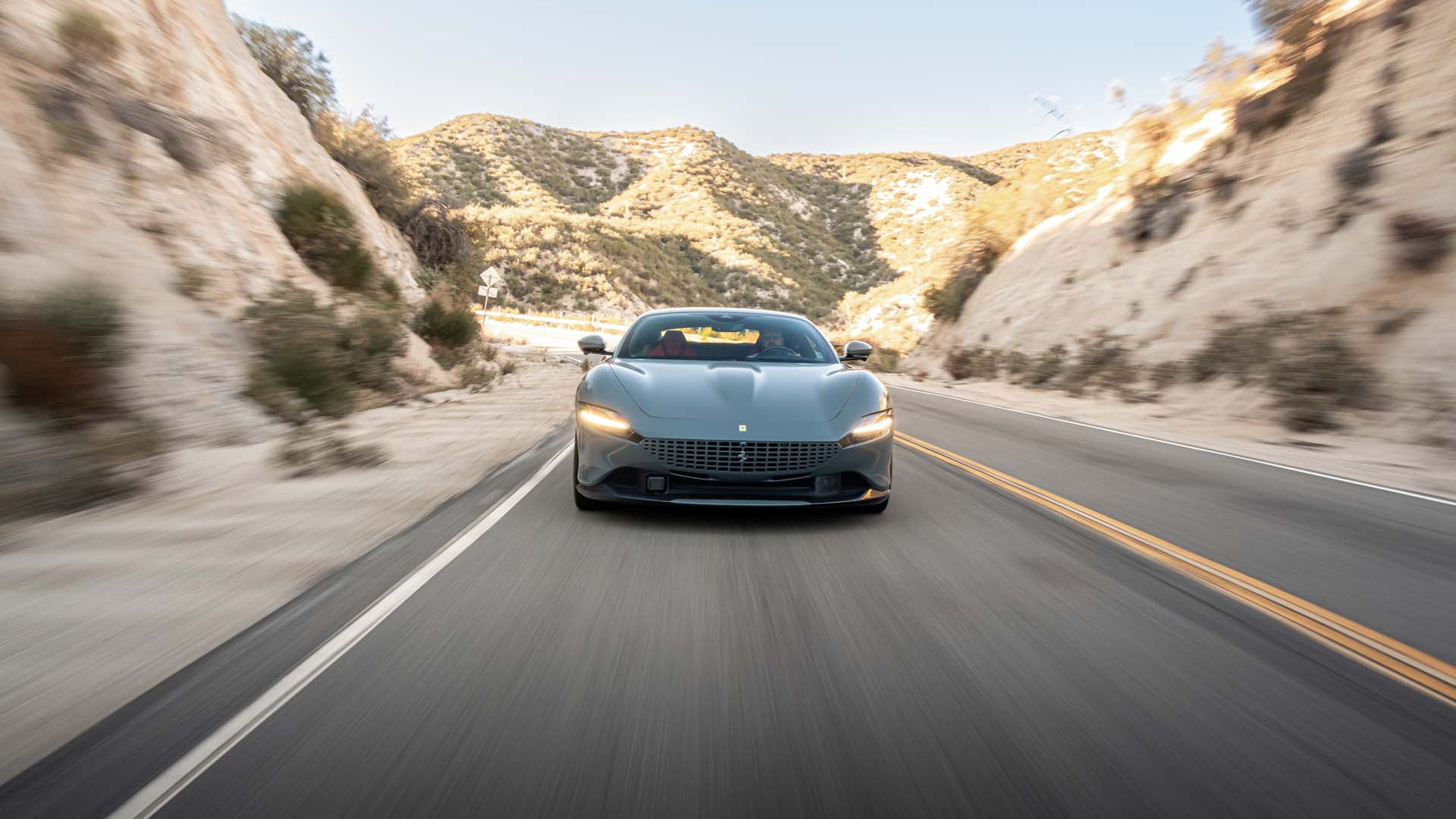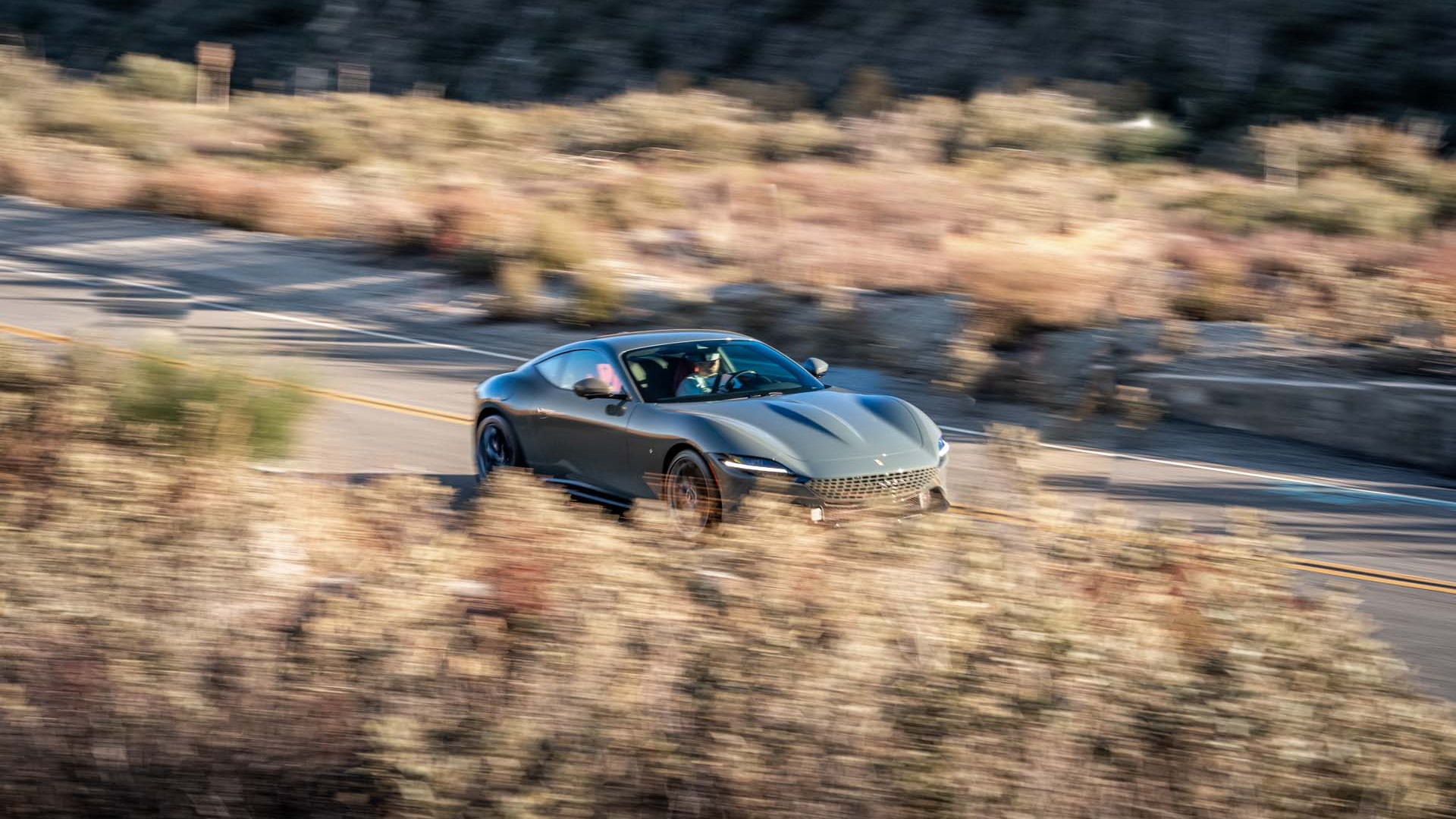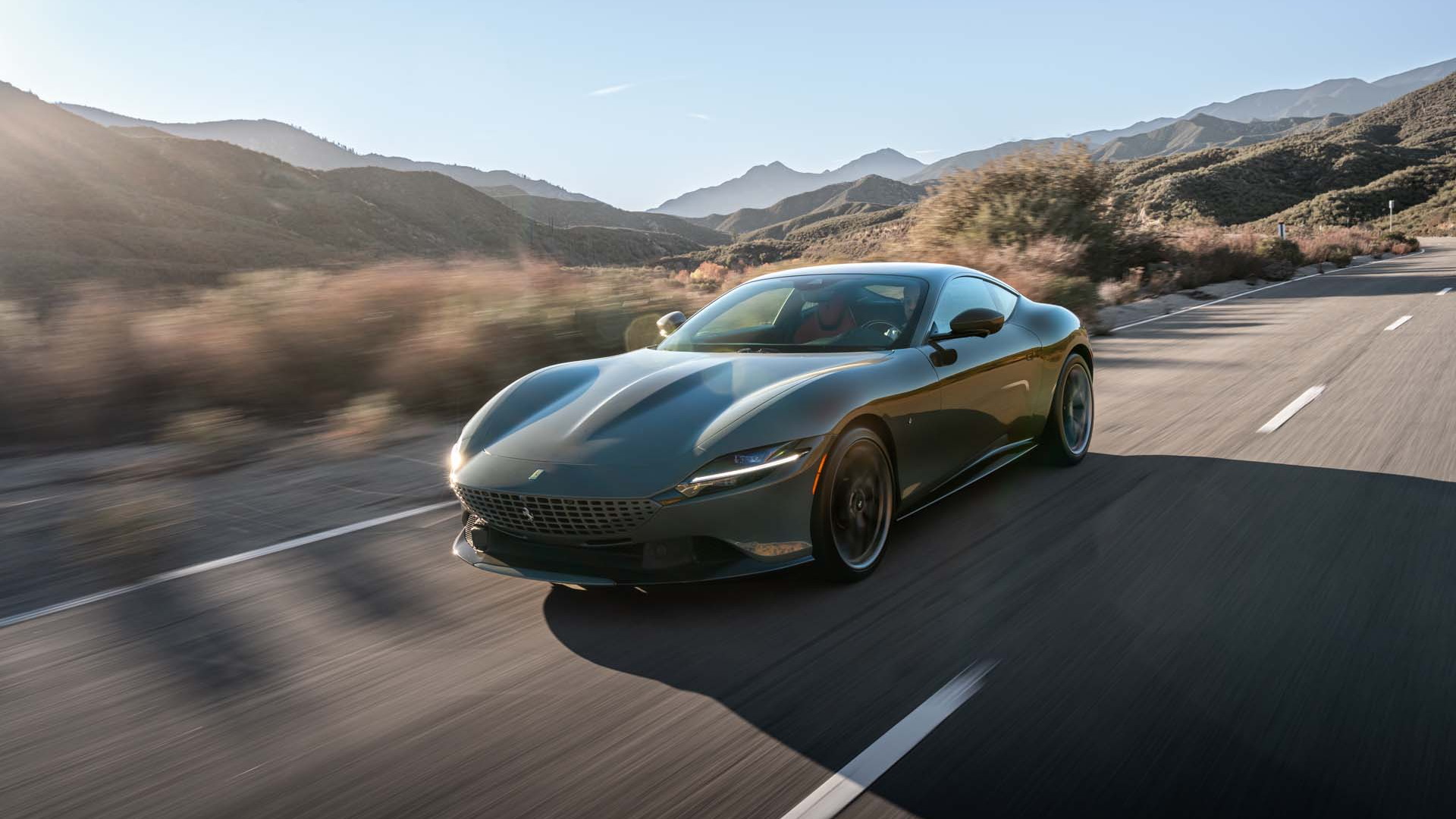Mid-engine hybrid supercars and the upcoming Purosangue crossover SUV are the Ferraris garnering the majority of headlines these days, but don’t sleep on the Roma coupe. This V-8-powered 2+2 is more than just an entry point into the House of Scuderia. It’s a grand tourer that comes alive in unexpected ways.
Sure, it starts at a lofty $243,358—or $311,647 as tested, including $5,000 (!) for destination—but ignore that price tag and start the engine. Driving the Roma will make you feel like a million bucks.
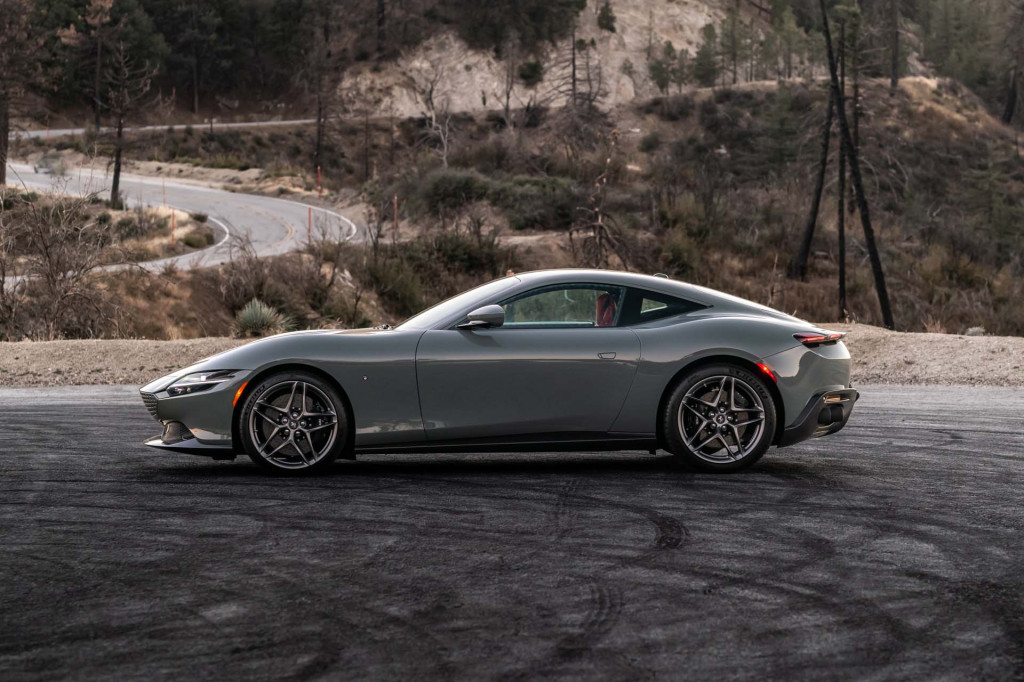
2022 Ferrari Roma – Photo by Tyler Clemmensen
Despite its mechanical relation to the Portofino M hardtop convertible, the Roma’s appearance is decidedly less “base Ferrari,” like it’s positioned much closer to the exotic-looking 296 GTB. Even in this test car’s demure shade of Grigio Medio, the Roma looks like a far more expensive car: sleek and sophisticated, with just enough weirdness to make any car fan come back for a second look.
A literal wealth of carbon-fiber accoutrements adorn this Roma test car, to the tune of $33,242 in glossy add-ons. The wheel caps, front spoiler, side sills, diffuser and active spoiler are all done up in lightweight material, combined with 20-inch wheels ($2,531), black brake calipers ($1,519) and a sport exhaust system ($1,687).
Other big-ticket options are found inside the Ferrari Roma coupe, including niceties like the carbon-fiber steering wheel and paddles ($5,062), a premium stereo ($6,243), an Alcantara headliner ($4,219), a passenger infotainment display ($5,906), and an egregious $4,219 line item just for Apple CarPlay. Yeesh.
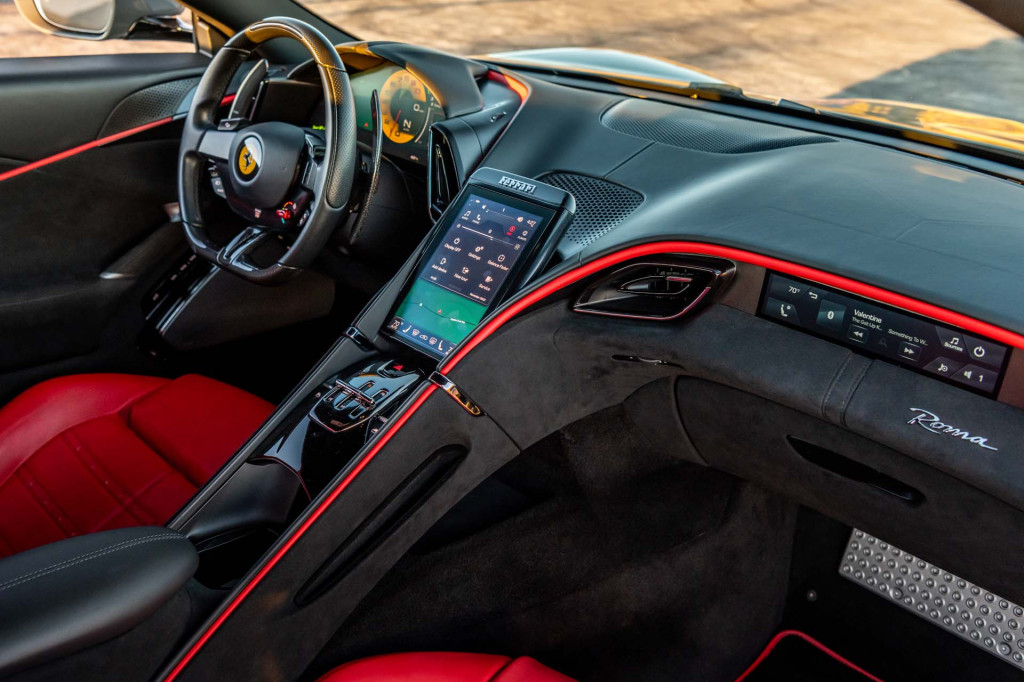
2022 Ferrari Roma – Photo by Tyler Clemmensen
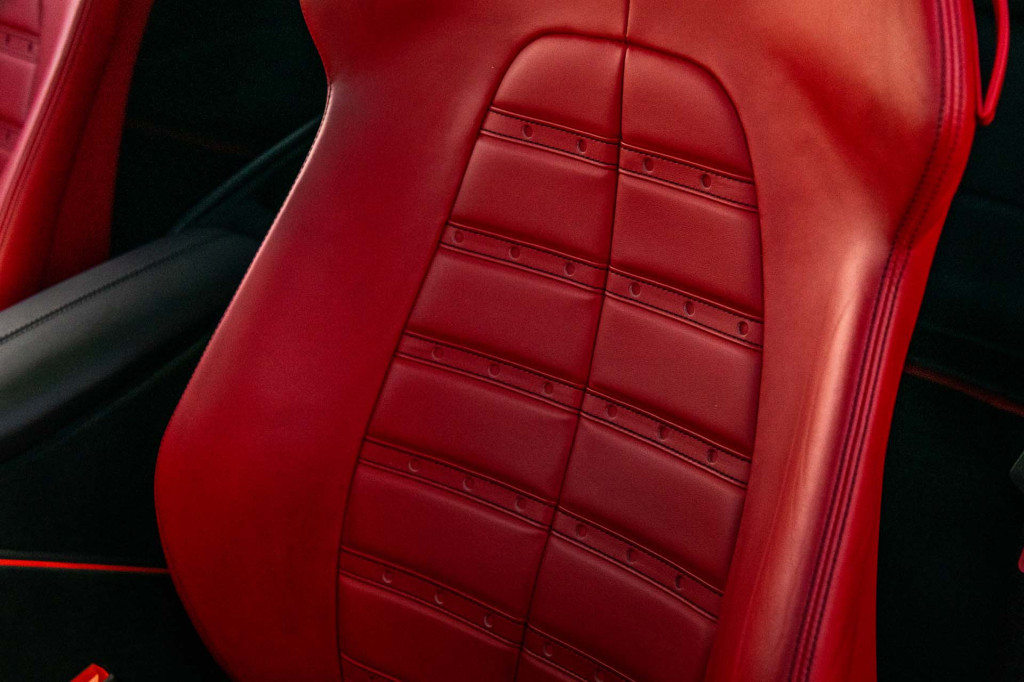
2022 Ferrari Roma – Photo by Tyler Clemmensen
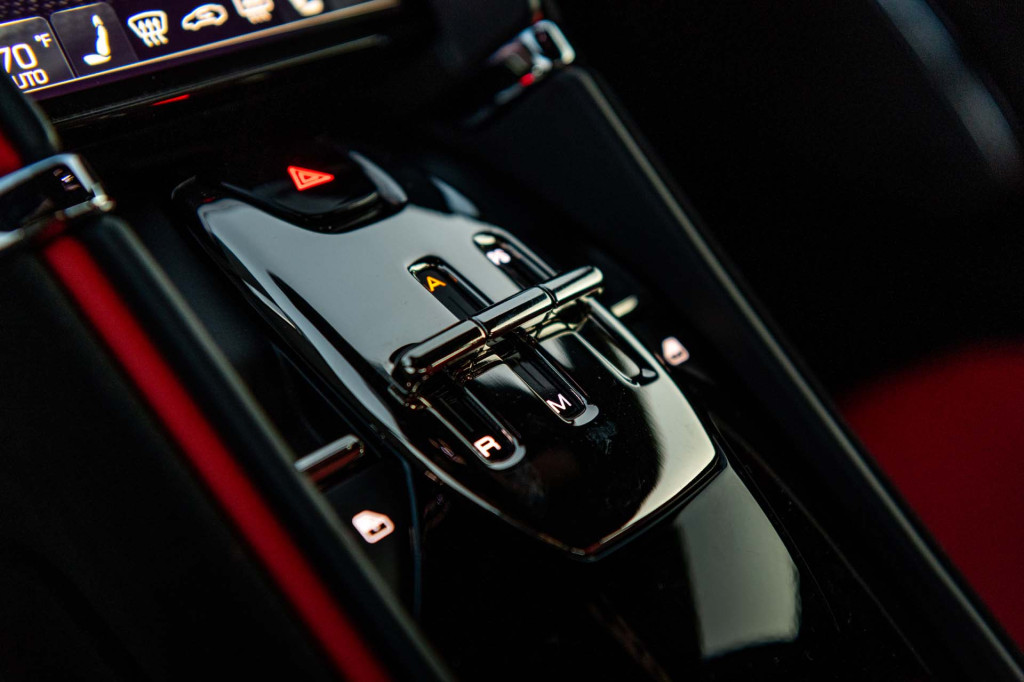
2022 Ferrari Roma – Photo by Tyler Clemmensen
Nevertheless, the Roma’s interior is absolutely exquisite. The seats are as comfy as they are supportive and genuinely feel like they’d coddle any backside over the long haul. Plus, outward vision to the front and sides is quite good for such a low-slung sports coupe. Headroom and legroom aren’t issues, either, even for taller passengers, but the pair of rear seats is downright useless for anything other than shopping bags. Typical.
If there’s one big nit to pick with the Roma, it’s the in-cabin technology. The portrait-oriented center touchscreen is low-res and laggy, and everything in the reconfigurable gauge cluster is controlled by a four-way haptic pad on the right side of the steering wheel. The controls are fairly easy to master, but the system’s responses to inputs are inconsistent, the menu structure is convoluted, and god help anyone who needs to access functions like driver-assistance settings or the trip computer while driving.
I realize a robust infotainment suite isn’t a top priority for Ferrari customers, but this is bad. Really bad. There’s something to be said for a bespoke experience, but not when it comes at the cost of usability. I want to put the UX designers from Ferrari—and Aston Martin, Lamborghini, McLaren, etc.—inside a $22,000 Chevy Trailblazer and say, “Here. Just do this.”
But I digress. Once you locate the backlit engine start capacitive touch icon (RIP, big red start button) and fire up the Roma’s V-8 engine, you won’t care about the frustrating mirror controls or the fact that the in-screen volume adjustments take forever to respond. When this car wakes up, so do your senses.
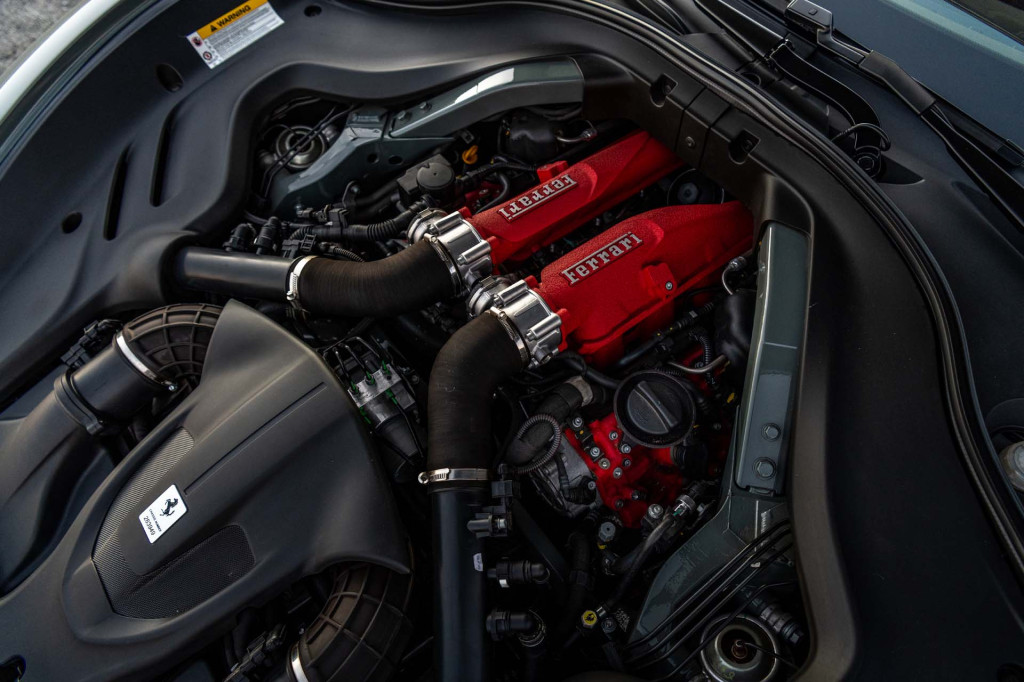
2022 Ferrari Roma – Photo by Tyler Clemmensen
The Roma uses the same 3.9-liter twin-turbo V-8 as the Portofino M, neatly nestled ahead of the firewall in a proper front-mid configuration. This engine produces 612 hp and 561 lb-ft of torque, and a sophisticated 8-speed dual-clutch automatic transmission drives the rear wheels. Huge, steering column-mounted paddle shifters let the driver work the transmission, while toggles on the center console in the shape of a manual shift gate provide access to Reverse, Neutral, and Automatic. Ferrari says the Roma will accelerate from 0-62 mph in 3.4 seconds and should top out right around 200 mph.
Launching the Roma is an intoxicating experience. Where a Porsche 911 Turbo will launch from a standstill to warp speed in the blink of an eye with no fuss, the Roma is way more visceral. The rear tires struggle to keep traction while managing the sheer brunt of the V-8’s power delivery, the dual-clutch transmission slams into each gear with force that’ll make your head buck, and the lights on the steering wheel illuminate as the engine inches closer and closer to the 7,500-rpm redline. So many supercars, Ferraris included, are point-and-shoot affairs, but the Roma is different. You absolutely have to hold on.
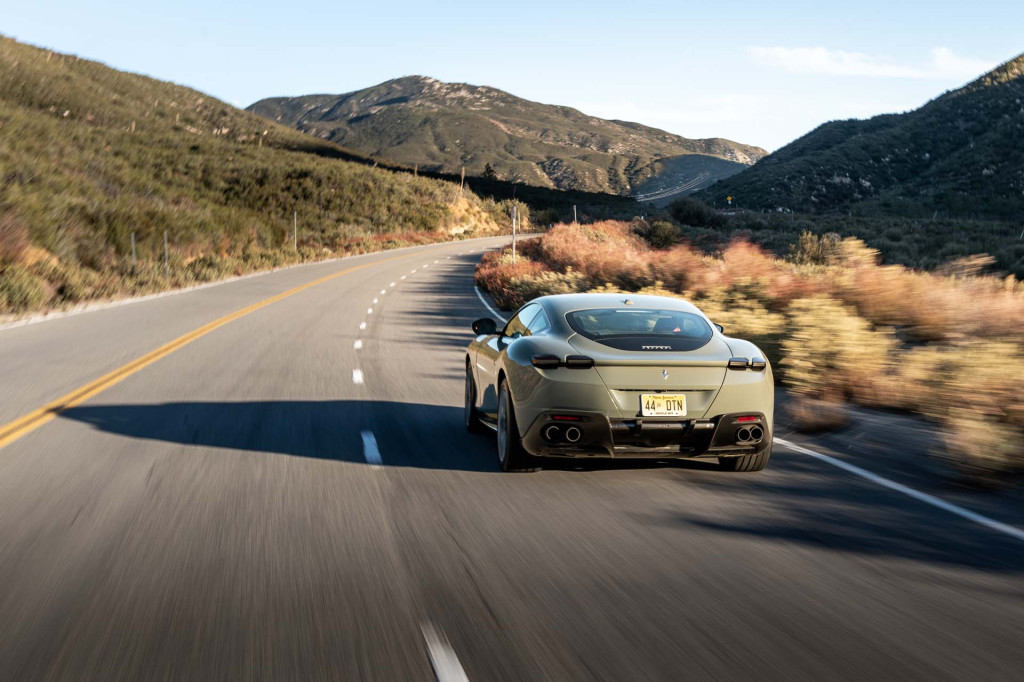
2022 Ferrari Roma – Photo by Tyler Clemmensen
The same is true while enjoying one of Southern California’s great canyon roads. The Roma feels alive in your hands, with chatty steering and a suspension that conveys every change in road surface through the seat of your pants. The engine sounds amazing; it’s one of the best forced-induction V-8s I’ve ever heard. Quick reflexes match nicely with the Roma’s playful rear end, and while the coupe has a slight tendency to oversteer around tighter hairpins, it’s always on the driver’s terms. Like any great Ferrari, the Roma works with the driver, encouraging you to drive it faster. This thing simply doesn’t disappoint.
That’s true during more docile bits of driving as well. The Roma can be fitted with an optional dual-mode magnetorheological suspension—a costly $5,568, natch—that strikes a perfect balance between taut and plush. Turn the Manettino drive mode selector from Comfort to Sport and the suspension stiffens up appreciably without crunching your spine when accidentally hitting a pothole too hard. Wet and Race modes round out the available settings, though I never found a reason to use either. A further turn to the right will fully disable the stability control, too, but that should only be reserved for track days—something a Roma will likely never do.
Combined with the aforementioned comfy cabin and good visibility, the Roma really could be driven every day. The trunk’s large enough to accommodate a pair of roll-aboard suitcases or one huge checked bag, and Ferrari even offers modern driver-assistance amenities like adaptive cruise control and lane-departure warnings, though the latter beeps incessantly. All that’s missing is an electronic front-end lift. Careful on those steep driveways.
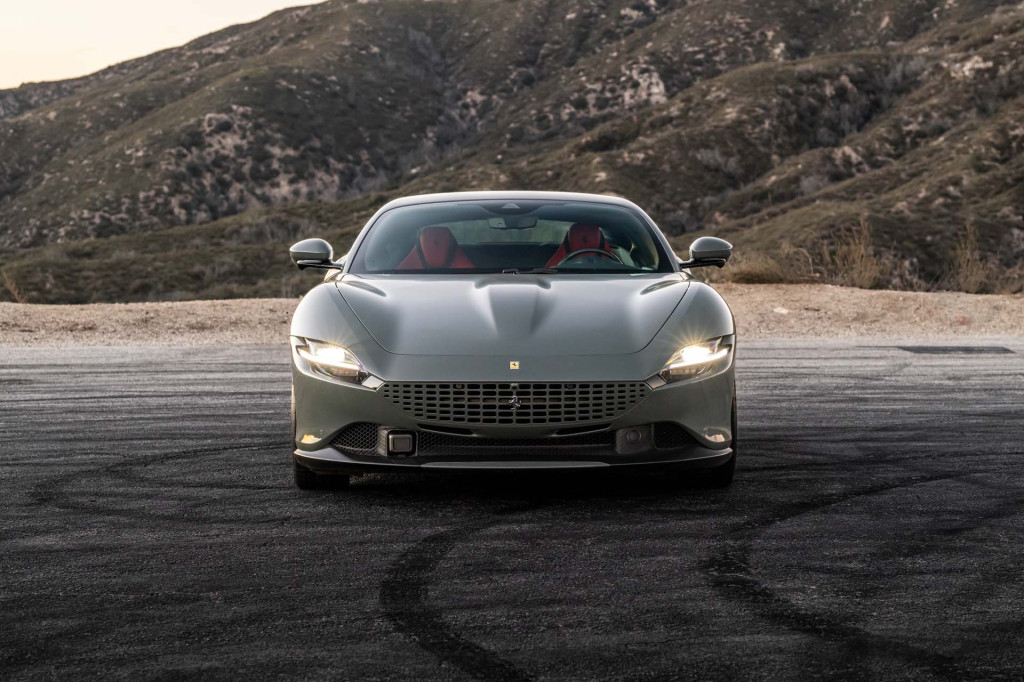
2022 Ferrari Roma – Photo by Tyler Clemmensen
The Roma’s high-end competitive set includes cars like the Aston Martin DB11 and Bentley Continental GT, both of which are formidable grand tourers in their own right but not nearly as exciting to drive. Ferrari’s more apt foe is the Porsche 911 Turbo S, which is less expensive at $217,550 to start (including destination). Crucially, the Turbo S is quicker and more powerful, but are those really the most important attributes to a potential Ferrari customer?
No, what matters most here is exclusivity. Compared to a Roma—or any Ferrari for that matter—911s are relatively thick on the ground. Yes, the Porsche is quicker and easier to live with and the infotainment controls won’t frustrate you to your wit's end, but the Roma is a Ferrari. And a great one at that.
—by Steven Ewing
Ferrari provided a test-car loan for Motor Authority to bring you this firsthand report.

